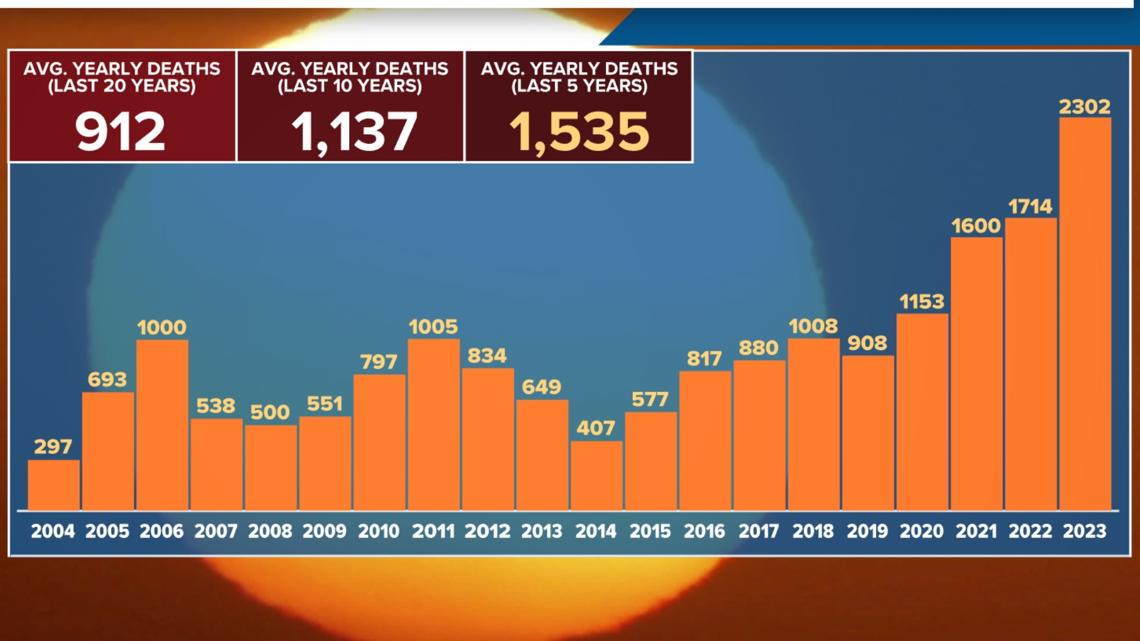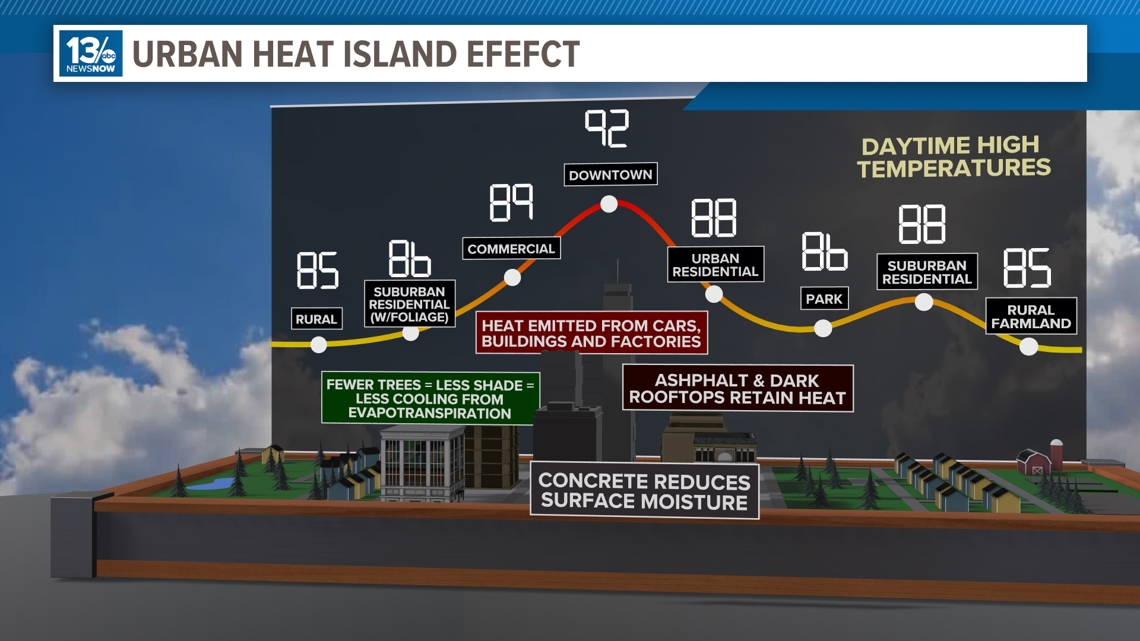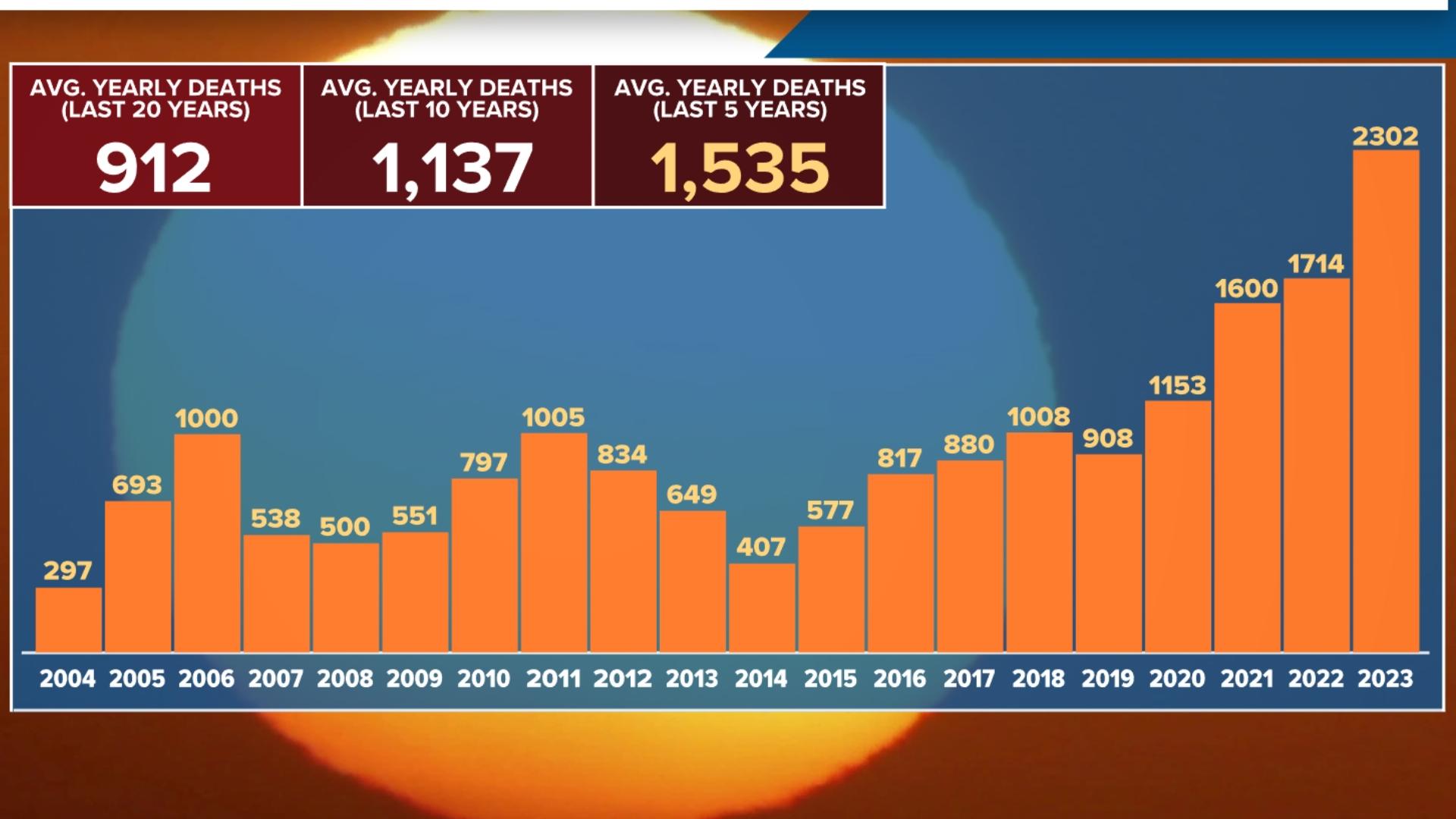NORFOLK, Va. — As Hampton Roads continues to bake under extreme heat with high temperatures around 100°, the U.S. Centers for Disease Control and Prevention reports that heat-related deaths have shown a steady rise over the past two decades.
Prolonged heatwaves, increasing average temperatures, and a growing elderly population vulnerable to heat stress are just some of the factors contributing to this rise.
Data collected from the National Environmental Public Health Tracking Network shows that in 2023, there were 2,302 heat-related deaths, the most deaths since records have been kept. Over the last five years, the average number of heat-related deaths has climbed to over 1,500.


Unfortunately, these deaths sometimes include children left inside cars. Even in a short period of time, temperatures inside of vehicles can reach dangerous levels quickly. With an outside temperature of 100°, it can reach 119° in 10 minutes inside of a car, and 134° after half an hour.
Law enforcement agencies and child advocacy groups are urging parents and caregivers to remain vigilant and take precautions to ensure the safety of children during hot weather.


Many heat-related deaths occur during heat waves in urban areas. In 1995, Chicago experienced a heat wave that killed 739 people over the course of five days. The urban heat island effect was a major contributing factor in those deaths.
The urban heat island effect is a phenomenon where urban areas experience higher temperatures compared to rural surroundings.
This occurs due to several factors unique to urban environments, such as heat absorption and retention in materials such as concrete and asphalt, lower vegetation coverage that provides shade and evapotranspiration, and human activities like driving and manufacturing that emit additional heat.



